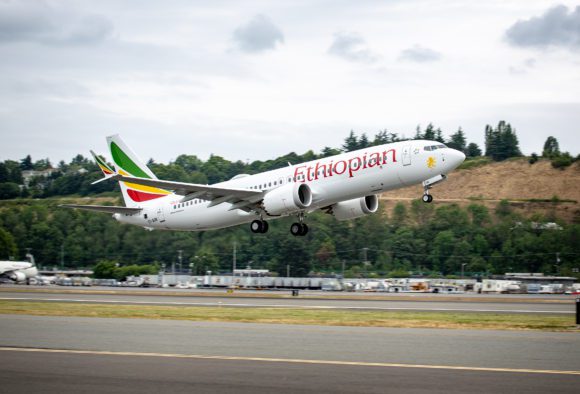Within an hour after the news broke of the tragic loss of Ethiopian Airlines flight ET302 and without a single piece of evidence as to what caused the crash, quite a few people on social media had drawn their conclusion: “Ground the MAX fleet!”.
Although it is highly unlikely that Chinese authorities have been influenced by this outpour, on March 11 they actually followed suit: the Civil Aviation Administration of China (CAAC) DID order to suspend operations of all 96 Chinese-registered Boeing 737 MAX’ until further notice. The same has been done by the Ethiopian authorities with the four remaining MAX 8s in Ethiopian’s fleet, as well as two aircraft with Cayman Airways. Later on March 11 Indonesia grounded MAX’ operated by Lion Air and Garuda, as did Royal Air Maroc, South Africa’s Comair, Brazil’s GOL and Singapore with Silk Air. Australia followed on March 12 by suspending MAX operations into the country. Some two-thirds of the worldwide MAX has now been volutarly grounded by airlines and regulatory agencies.
An FAA team arrived on the scene of the accident on Monday to assist the local investigators. The agency announced it will issue a Continued Airworthiness Notification to the International Community to advise MAX operators of any issues that could affect their operations, based on what is known so far about the accident.
As reactions world wide have shown, there is a great deal of public uneasiness over the safety of the MAX, with the Ethiopian crash coming only five months after the Lion Air fatal incident near Jakarta involving another MAX 8.
As the FAA also says, it is too early to conclusively connect both accidents, except that the aircraft type involved is the same. The preliminary report on Lion Air JT610 highlighted the loss of control the cockpit crew experienced, as they tried in vain to fight the nose-down attitude commanded by the Maneuvring Characteristics Augmentation System (MCAS) which responded to faulty inputs from sensors. Boeing will come up with a software update on MCAS no later than April, the FAA notification says.
Checking JT610’s flight profile, its erratic flight that included 26 attempts by the crew to fight the nose-down command, it looks very different from what is visible on ET302’s ADS-B profile on Flightradar24: a quick climb to 8.150 feet one minute into the flight, then a decrease in altitude to 7.725 feet after two minutes, before another climb to her maximum altitude of 8.600 feet.
Speed went up steadily to 282 knots, increased when she lost some altitude and continued to increase to 383 knots until the crash. However, vertical speed was erratic and this could indicate to a control problem, but it’s early days for conclusions. The FAA notification says that despite similarities between the two accidents, there is no data “to draw any conclusions or take any actions.”
Now that the cockpit voice and flight data recorders have been retrieved and we have to wait for them to be analyzed, we officially know nothing about what went on in the six-minute flight of Boeing MAX 8 ET-AVJ, which was delivered on November 15.
All involved in the investigations of both MAX crashes will feel the urgency to determine the exact cause of what brought down these brand new airliners, equipped with the latest technology. Not the least Boeing itself, whose transparency and communication to operators on the implementation of MCAS have been questioned by quite a few.
In this situation, it is not the moment to celebrate, so it’s fully understandable that Boeing has postponed the roll-out ceremony of the first 777X from this Wednesday until further notice.
Ethiopian Airlines took delivery of its first MAX 8 on July 2, 2018. Until the crash on Sunday, it had taken delivery of five out of 30 on order. (Boeing)
Views: 0





“It is too early to connect both accidents”
I disagree. There’s at least five superficial variables linking them: identical aircraft type; approximately same age airframe; loss during approximately same stage of flight; evidence of airspeed & altitude irrelugarities immediately prior to crash; lack of weather influence.
Then combine that with what we know so far about the direction the Lion Air investigation is going, and the fact that this is a new aircraft type with relatively limited operational history (meaning an inherent design flaw would only become apparent about now). Not to mention the reputational & commercial damage that airlines who continue operating the type are going to incur (would you book a flight for your whole family on a MAX today?)
It’s true that the decision to ground the fleet cannot be taken by online commentators. But, once the experts verify the prima facie connections than commentators are drawing attention to, then yes absolutely grounding is the correct move.
The lack of a concrete explanation in two similar incidents is a good reason for grounding. It’s a bad reason to keep flying and hope for the best.